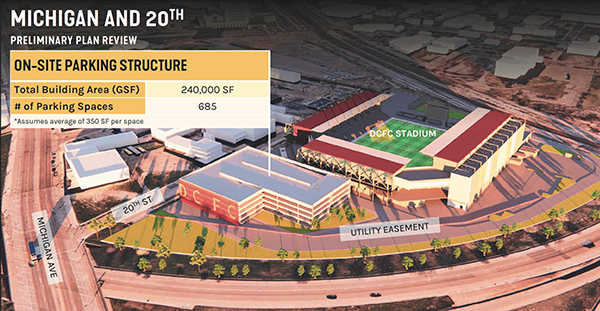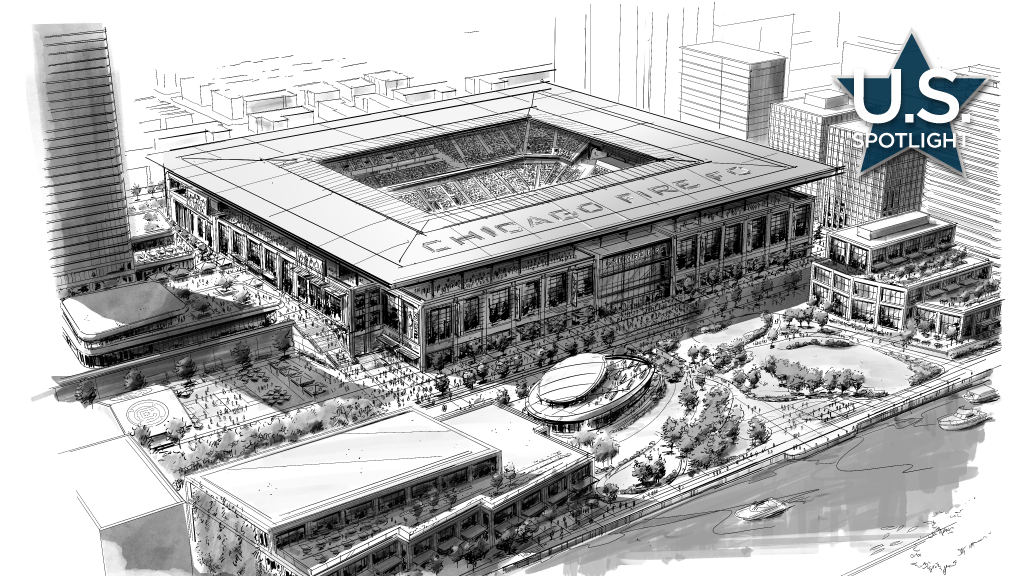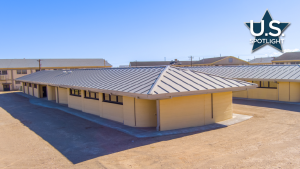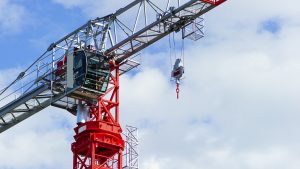It’s a tale of two cities.
In Detroit, the city’s community-owned popular soccer franchise Detroit FC Rouge, in late May announced plans to build a 15,000-seat stadium on the city’s southwest side. During the same week the Chicago Fire FC also made public plans to construct a 22,000-seat stadium on long undeveloped lands near downtown known as “The 78.”
In both cases, the new sites have been intriguing pieces of real estate.
In the case of Detroit, the stadium, financial details, for which have yet to be released, will be constructed at a long abandoned but modernish hospital near the Ambassador Bridge connecting the city with Windsor, Ont.
The former Southwest Detroit Hospital, which is dated from the 1970s, features a sleek silver like facade and porthole windows giving it an almost spaceship look. Notably it was the first African American owned hospital in the United States and the first to accredit Black doctors and nurses in the post-1960s civil rights era. But controversies and lawsuits, and finally bankruptcy, ensued and the building closed in 1991.

In 1996 it was resurrected as United Community Hospital but suffered similar problems and closed in the early 2000s. It has sat abandoned ever since, a modern ruin at the interchange of Interstates 96 and 75.
The club purchased the property just over a year ago, also for an undisclosed amount. The team owners are local soccer enthusiasts with a groundswell of support but have been sparing in their release of information. The last owner, Detroit commercial landord Dennis Kefallinos, purchased the distressed property for almost $8,000 in 2016. The soccer team has been playing in a 7,500-seat stadium several miles away.
Interestingly, the building sits only one property over from the long-abandoned Michigan Central railway station, a hulk of a tower that once greeted travellers entering the U.S. from Canada but was revived and reopened last year by Ford Motor Co.
And reviving it as part of a mixed-use development would help knit together two of the cities’ oldest neighborhoods, Corktown to the east and Mexicantown to the southwest.
“It’s only going to create a lot of the economic development spinoff effects that Michigan Central is already producing,” Detroit’s Wayne State University urban studies professor Jeff Horner said.
Ironically, the site seems like prime real estate. But this is Detroit with a long history of post war population flight and consequent urban blight. The same held true for Michigan Central and numerous buildings in the urban core. For the longest time developers held back due to costly redevelopment in an underpopulated area.
“It just wasn’t worth it,” Horner said.
Moreover, the hospital itself would have to be torn down and likely some brownfield remediation.
That’s now been remedied as the city has approved $6 million to compensate for demolition. The building’s basement is filled with two million gallons of water, which must be pumped out first, a similar problem which confronted the new owners of Michigan Central. The team expects demolition to begin this summer with the new stadium completed by early 2027. The owners couldn’t be reached for comment.
“There’s a much lower standard for environmental remediation for things like stadiums,” Horner said.
Meanwhile 280 miles away lies the Windy City, with its Chicago Fire club about to build on a 62-acre site in the South Loop alongside the Chicago River.
Owner Joe Mansueto, founder of financial firm Morningstar, is spending $650 million of his own money for the “more than just a stadium” complex to open in 2028. The stadium itself would take up nine acres.
By way of announcement the owner took out a full page “Dear Chicago” ad in Chicago’s two dailies.
“Soccer is the world’s game and a world-class city like ours deserves a world-class club – with a world-class home to match.”
The team had been playing at Soldier Field and drawing an average 22,000 per game.
Eminent Chicago developer Related Midwest will build the stadium.
“The Fire’s decision to bring the city’s first soccer-specific stadium to our site will give rise to an entirely new sports and entertainment district that activates more than a half mile of downtown riverfront,” Related’s president Curt Bailey said.
The team says the stadium will be “part of a larger mixed-use district that will take shape around it. With new homes, world-class dining and shopping, local artwork, outdoor gathering spaces, affordable housing and a half-mile riverwalk.”
The name “The 78” comes from the long-sought goal of redeveloping the city’s 78th neighborhood. It will be one of the largest privately financed developments in Chicago’s history.
The open field site had long been eyed for several projects including Amazon and United Airlines HQs, a casino, even a new White Sox or Bears stadium. But, say local observers, developing a soccer stadium may be the least complicated way to go.










Recent Comments
comments for this post are closed